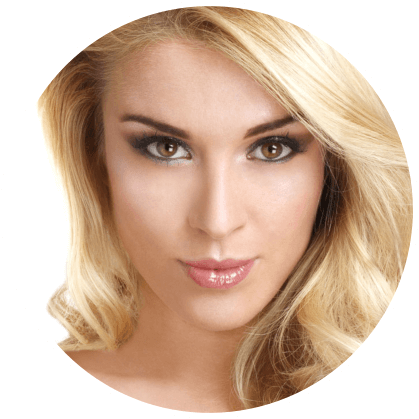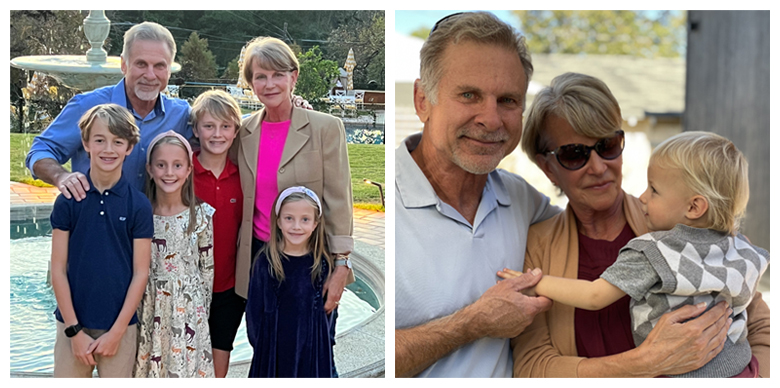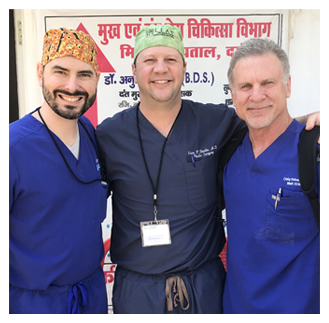Dallas and Fort Worth rhinoplasty patients should know that the nose is one of the defining structures of the face. If it has a nice shape and is of proper proportions, it brings into focus and compliments the remainder of the face. If it has an undesirable shape, is too long or too short, then it is difficult to get past the distractions of the nose to other facial features. Reshaping the nose, or rhinoplasty, is one of the most common cosmetic surgeries performed. The American Society of Plastic Surgeons (ASPS) reports that nearly 220,000 rhinoplasties were performed in 2014.The Dallas, Fort Worth (Metroplex) has evolved into a wonderfully diverse mixture of cultures over the past decade. Future projections promise further diversification. With this change, more demand has arisen for plastic surgeons to be sensitive to ethnic variations among their patients’ facial features. Rarely is this diversity manifested as universally as it is in the nose. Rather than seeking a bland, neutral nose that is attractive but lacks individuality and character, patients are coming to Dr. Hobar with the interest of improving aspects of their nose while not altering the defining features that add character and grace to their overall facial symmetry. In addition to being a board certified Dallas plastic surgeon in private practice for over 25 years, Dr. Hobar specializes in rhinoplasties. He strives to avoid the operated look when performing rhinoplasty. His sensitivity to each of his patient’s unique features and desires is compassionately expressed in his personal view of the desired outcome of nose surgery.
“Each face is individualized and each nose should optimally match that face”, explains Dr. Hobar. “I want a person to look at my patient’s nose, and say ‘what a beautiful nose’, but never be able to tell it was created that way surgically.”
What is Rhinoplasty?
Rhinoplasty, commonly called nose surgery or sometimes more crudely, nose job, is a surgical cosmetic procedure designed to alter the appearance of the nose, improving it’s shape and proportion which commonly enhances other facial features by creating an overall increased sense of balance to the face. During rhinoplasty surgery, Dr. Hobar works with detailed attention as he alters the underlying structures of the nose, carefully sculpting the network of cartilage and bone.Because of his extensive cosmetic surgery experience as well as his reconstructive experience, Dr. Hobar is also well known in Dallas and Fort Worth for performing excellent secondary rhinoplasties. A secondary rhinoplasty is performed when the results of a first rhinoplasty have left the patient unsatisfied. Due to scar tissue formation and changes in the cartilage, bone and overlying skin elasticity, a complex understanding and appreciation of the tissue anatomy and physiology, as well as the altered healing process is critical to the success of a secondary rhinoplasty. This is an area where Dr. Hobar’s experience speaks for itself. He has extensive experience in operating on noses for cosmetic purposes as well as reconstructive reasons, from three month old babies with cleft lip nasal deformities, to older children with congenital nasal deformities, to adults with traumatic injuries. He was also the team plastic surgeon for the Dallas Stars for many years, repairing many challenging nasal injuries. “I definitely feel privileged to have as much experience as I do operating on all kinds of noses in all stages of life. Rather than giving me over confidence, it has given me a deep humility. The nose is one of the most beautiful, intricately put together parts of our body. The bony and cartilaginous structure determine the shape – but only if the skin contracts and assumes the contour created underneath. Knowing how to achieve this balance is what it’s all about – and achieving it consistently is one of the greatest challenges of cosmetic surgery.”
Rhinoplasties can safely be performed in combination with other procedures. It is not uncommon to perform them in the context of full facial rejuvenation or even with a combination of breast augmentation for a patient interested in combining those procedures. Due to the delicate balance that inherently exists between the nose and chin, Dr. Hobar frequently does these two surgeries – the nose and chin – together. This combination can produce an incredible effect, instantly bringing harmony and balance to a face that was formerly disproportionate. “Facial balance is facial harmony and an essential component to beauty. An under projecting chin (see section on chin surgery) can make the nose look markedly bigger than it really is, and predispose to premature lower face and neck aging.
Am I a good candidate for Rhinoplasty?
Most importantly, it is essential that you be in good physical health. Nose surgery is very safe and effective when the patient is in sound physical condition. It is important to disclose all of your current and past health conditions as well as any prescribed or over the counter medications or supplements you take. After a careful review of this information, Dr. Hobar might suggest certain preoperative tests to ensure that you are a good surgical candidate.Psychological health is also an essential component. You might need to alter certain commitments and delegate responsibility to others during the initial days of your recovery experience. It is also critical to understand that while a rhinoplasty will definitely improve the appearance of your nose and create greater harmony among your facial features, it is not able to solve other underlying insecurities and issues. Most people experience a myriad of emotions in the immediate periods before and after surgery. While this can be challenging, it is also normal. Being realistic about your goals and expectations is essential to achieving a positive outcome for any Dallas or Fort Worth rhinoplasty patient.
If you are unhappy with the overall appearance of your nose or just with certain features of your nose, then you are a good candidate for rhinoplasty. If you are unhappy with previous nose surgery, either cosmetic or reconstructive, then you are a good candidate for a secondary rhinoplasty. Patients who experience breathing difficulty can benefit from having a septoplasty in combination with their rhinoplasty. This procedure alters the inner division between the nose (the septum), ensuring that the nasal passages are optimally open for a clear breathing passageway. Dr. Hobar has considerable experience in performing septoplasty, either as a stand alone procedure or in conjunction with cosmetic rhinoplasty.
What age is acceptable for Rhinoplasty?
How is the procedure performed?
Depending on whether the rhinoplasty is open or closed, Dr. Hobar makes the incisions on the nose as needed. In an open rhinoplasty, a tiny incision is made at the base of the columella, the strip of tissues separating the nostrils, with the remainder of the incisions internally. Dr. Hobar states, “the only visible portion of the incision in an open rhinoplasty is the tiny portion that goes across the columella (bottom of the nose). This is continued into bilateral internal incisions which allow complete visualization of all the important cartilage and bony structures of the nose. If the incision is closed precisely and with tiny sutures, it is very difficult to find, let alone see after healing. Don’t be afraid of a tiny, usually imperceptible scar on the bottom of your nose – be afraid of your surgeon not being able to directly visualize and make the precise adjustments needed to give you an optimal result.” In a closed rhinoplasty, incisions are limited to the inside of your nostrils. Closed rhinoplasties are best performed on isolated dorsal humps or minimal tip fullness, not on major refinements or asymmetry correction in the tip cartilages. Depending on the nature of work to be done, Dr. Hobar might use cartilage from your nasal septum or other areas to provide additional support to your nose. He could also recommend altering the nostril size or width of the base of your nose, which is accomplished through tiny incisions hidden around the base of each nostril (alar base resections).The rhinoplasty procedure is usually scheduled for roughly two hours, which enables Dr. Hobar to work in a focused and precise manner. You are put to sleep under general anesthesia by a well trained anesthetist (CRNA) or anesthesiologist. General anesthesia ensures a very well controlled, safe surgical experience. After surgery, you are taken to the recovery room where you are closely monitored as you awaken from anesthesia.
Recovering from Rhinoplasty
Postoperatively, a splint is placed on the bridge of the nose and typically comes off in seven days. Packing is not used on the inside of the nose; oftentimes a hollow soft splint is used if septal work is done. This provides internal support to the cartilage that has been newly sculpted and facilitates the healing process. Any sutures you have that are not dissolvable will be removed at the same time as your splint removal. After surgery, most people experience bruising and swelling. The degree varies greatly from patient to patient, but most people find that within a week to ten days after surgery, their swelling and bruising has subsided enough that they feel comfortable with moderate levels of social interaction. And, with the conspicuous dressing removed, they can enjoy the early results of their changed nose.Keep in mind that the healing process is just that – a process. You will look pretty beat up to three days after surgery; this is when swelling and bruising peak. After day three, the healing process becomes highly individualized. It is not uncommon at the one week appointment for suture and splint removal for some patients to have very little bruising or swelling, while others have more. Be patient with yourself and this process. While it is imperative to be active, eat well and get plenty of rest, it is true that people heal at different paces.
Most patients’ experiences with a rhinoplasty are not characterized as being painful. Instead, they experience a dull pain and pressure that is well controlled with medication. Nausea is a common problem in patients after rhinoplasty and this is best controlled by consuming small, frequent meals that are easily digested. Unfortunately, though you may not have much of an appetite, taking your prescription medications on an empty stomach exacerbates feelings of nausea, which can really slow you down. It is important that you take an active role and try to prevent or control your upset stomach. It should not inhibit you from moving, eating and maintaining a light activity level during the recovery process. Dr. Hobar is a big believer in early activity to aid the healing process and if you are into fitness, he will have you back in the gym in a week or two.
Why choose Dr. Hobar?
As a cosmetic surgeon in Dallas Fort Worth with extensive training and experience in rhinoplasties, he is truly renowned for his nose surgery. In 1993, he presented his techniques of adjusting nasal length to other plastic surgeons at the annual meeting of the Rhinoplasty Society in New York City.Dr. Hobar has been instrumental in showing other plastic surgeons that the ideal nasal size depends on the particular features of an individual’s face. During your initial consultation with Dr. Hobar, he will unobtrusively measure your nose and examine how it is – or is not – in balance with other facial features. After this initial consultation, you will come back again to meet with Dr. Hobar. At this appointment, you will sit with him in front of a computer as he does projected imaging as to the possible results he sees to be beneficial. This consult is designed to be highly interactive in nature. As Dr. Hobar explains, “the computer in no way predicts the outcome of surgery, but it adds another dimension to my discussion with my patient – verbal becomes visual. When I say I am going to refine the tip and shorten the projection, what exactly does that mean visually? The computer lets me show that image.” And by performing the computer imaging himself, Dr. Hobar is not confined by the preprogrammed, cookie-cutter changes that certain software packages promote. He can show you the specific, individualized results he recommends for your nose and/or chin.






